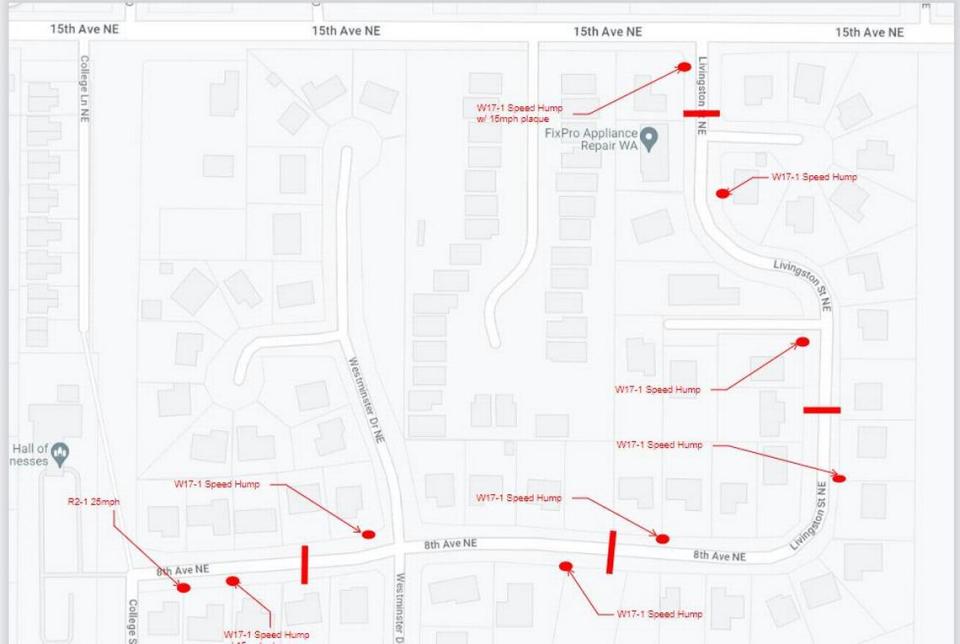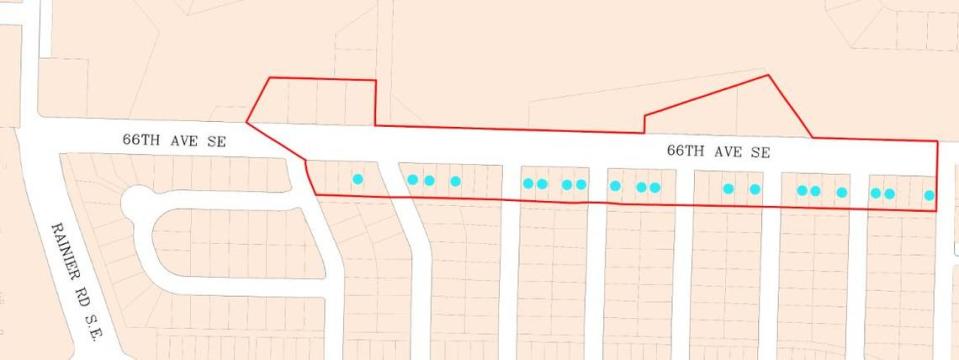This popular traffic shortcut in Lacey is no longer a smooth ride
A popular traffic shortcut between College Street Northeast and 15th Avenue is bumpier after the city recently added speed humps to the roadway, city officials said Thursday.
The shortcut is Eighth Avenue Northeast and Livingston Street, which winds its way through a residential neighborhood before arriving at 15th Avenue. Head east and 15th Avenue takes you in the direction of the outdoors store Cabela’s. Head west and you run into Sleater Kinney Road.

Any traffic calming request made to the city begins with a speed study. The study showed that speeds did not meet the city’s threshold, but the volume of traffic was “extremely high,” said Assistant City Manager Shannon Kelley-Fong on Thursday.
Based on the traffic volumes, it was clear drivers were using the route as a shortcut, she said.
The next step in the process is to produce a petition and collect signatures. The neighborhood turned around a super-majority of signatures in a matter of days, Kelley-Fong said.
The result was installation of a series of temporary speed humps and permanent yellow button reflectors along the route. But why are the speed humps only temporary?
Typically the city would 8ask the neighborhood to vote whether to make the speed humps permanent. But in this case, the city already has a plan to extend College Street Northeast to 15th Avenue Northeast. Once that work is complete, the city expects drivers to take College Street to 15th rather than cut through the neighborhood, eliminating the need for speed humps.
Public works director Scott Egger said Thursday the city needs to buy a little more right-of-way for the College Street extension. The goal is to begin work in 2024 and complete it in 2025, he said. This work is separate from the widening of College Street that the city is doing south of Lacey Boulevard.
The city isn’t done fielding traffic calming requests. They also have received one for 66th Avenue Southeast, which falls between Capitol City Golf Club and the Horizon Pointe neighborhood.

Once again city officials undertook a speed test and this time it did meet the speed threshold to move forward, Egger said. The next step is to produce the petition and collect signatures before any temporary traffic calming device is applied.
Once the device is applied, they stay in place for six months to a year, Egger said. Not only does that help residents decide if they want to make them permanent, but also if they don’t.
“Not everybody supports them,” said Egger because there is noise associated with speed humps, including the sound of cars decelerating and accelerating before and after the hump.

